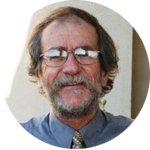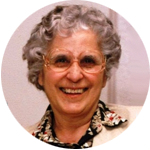Headliners
- 3 in newsroom at Burlington (Vt.) Free Press laid off
- GateHouse parent’s Q3 report bucks bad-news trend
- GateHouse to add. chain-wide. 100 digital sales reps
- Fogler replaces Getler as publisher of Vt.’s Free Press
- Gannett ends bid to buy Tronc; Tronc’s stock sinks
- Vt. private nonprofit judged to be subject to public records law
- Conn, agency forgoes loophole to keep files secret
- Medford, Mass., zoning chief quits; meeting law ignored
- N.H. Gov. Hassan sued for withholding state contract files
- Boston Globe ends its Select program Dec. 31
- 3 in N.H. honored as advocates of First Amendment
- Nominees due Jan. 17 for FOI Award
- NENPA U. session on opioids set for Nov. 17 in Mass.
- N.E. Newspaper Hall of Fame nominations open
Transitions
MASSACHUSETTS
Obituaries
- Ruth Wolf Page
- Paul Christiansen
- James Mutrie Jr.
- Theresa ‘Terry’ (Ruff) Walsh
- Marjorie Fay Palm
- Nancy Shepard McClelland Wilson
- Eric C. Wilson
- John J. ‘Jack’ Ginnetti Jr.
- Eleanor C Woodbury
- Lillian Florence Losaw Misuraca
- Marie (Renzi) Sunderland
- Mary M. Murphy
- Edwin H. Pert
- Anthony P. Hmura
- Douglas D. ‘Daniel’ Sullivan
- James Patrick O;Connor Jr.
- Stanley K. Holmes
- Jeanette Severino Bouchard
- Virginia M. Allen
- Adelaide M. Marek
- John F. Buckley Jr.
- Wayne A. Barcomb
- Marie E. (Caswell) Roos
Briefs
Awards and Honors
Advertising News
- GateHouse to add 100 digital sales reps chain-wide
- Forecast: Native ads to supply 25% of revenue by 2018
- How Facebook is gaining revenue for some publishers
- Google, Facebook ads boom as other digital ads shrink
- Publishers sour on misleading ‘around the web’ ads
- Custom banner ads coming more into vogue
Advice
Financial News
Training
Mobile/Online News
- Globe, others gain from Apple News changes, traffic
- Hearst Newspapers adopt new data-driven digital plan
- Consumers of free news might also be willing to pay
- Email newsletters serving as test sites for new initiatives
- Mojo: Evolution of mobile journalism, and how-to tips
- Mic inaugurates video push notifications via mobile app
Social Media News
Legal Briefs
- Vt. private nonprofit ruled subject to public records law
- Medford, Mass., zoning chief quits; meeting law ignored
- Conn. agency uses loophole to keep water files secret
- N.H. judge KOs bid for release of dead woman’s name
- Vt. ACLU joins VTDigger in suing state for records
- Conn, agency buckles on loophole to keep files secret
- Conn. candidates asked to take open gov’t pledge
- N.H. Gov. sued for withholding state contract files
- Braintree cops use nuanced dodges to records requests
- New N.H. law prohibits campaign attire in polling places
- Vt. wrestles with open meeting law ???s in digital age
- Rolling Stone, writer of discredited rape story lose suit
- Wenner rejects Rolling Stone retraction of story
Industry News
- 3 laid off in Burlington (Vt.) Free Press newsroom
- 2 Vt. dailies restore 2 days in print, but drop Sundays
- Gannett ends bid to buy Tronc; Tronc’s stock sinks
- CEO: Tronc faces ‘bit of a restart’ as sale fizzles
- Possible Gannett buys weighed, post-Tronc bust
- History of Tribune-turned-Tronc under entrepreneur Ferro
- Newsonomics’ guarded view of newspapers’ future
- 11% projected ad decline in 2016 drives more cost cuts
- Job and other cuts loom at some large news firms
- 2 views of investigative journalism’s future, in extremis
- Maine mill to close papermaking machine, lay off 190
- Social media gain as news source; TV, print wane
- News Media Alliance chief reflects on year past
- AP’s next automated move: Print-to-broadcast conversion
- Clinton sets restrictive press rules on ‘free’ speeches
- A reminder about the basic tenets of journalism ethics
- Does newspapers’ future lie in subscriber-based past?
- A look at how robots might affect journalists’ jobs
- Why fact-checking should extend beyond politics
- Local news readers more likely to vote





What election results might portend for 1st Amendment
Gene Policinski, inside the First Amendment
Gene Policinski is chief operating officer of the Newseum Institute and senior vice president of the Institute’s First Amendment Center. He can be reached at gpolicinski@newseum.org.
Follow him on Twitter:
@genefac
For nearly two years, the nation has been through an exhausting process of sorting through possible candidates, selecting nominees and choosing those to be elected to offices high and low, local and state and national.
In many ways, such a season ends in a glory day for our First Amendment freedoms. Voting is the ultimate result of the constitutional protections of our core freedoms expressed in the First Amendment: the governed selecting those who, until the next election, are charged with governing on our behalf.
There is a reason we protect political speech above all other categories: It’s one of the essential parts of how our nation works, even when for many people, it’s effectively “not working.” The process remains the envy of the world, which periodically places it in the crosshairs of adversaries who would tear it down, now in ways we have not seen before.
Debate, discussion, disagreement and discourse are the ways we exchange our ideas in the public square — sometimes bitterly and angrily, to be sure. We also know from history that this oft-messy method has, over time, meant a continual renewal of our nation and its values, and improvement of the lives of our fellow citizens.
In more direct First Amendment terms, in our elections, we decide who responds to our petitions for change. Many of us during these long months of the 2016 presidential race have assembled to make our voices heard — either through actual assemblies and rallies, or through the increasingly common online communities formed by social media. For some people, tenets of faith or prayers for divine guidance will help us in deciding for whom to vote.
Through it all the press — with more participants than ever before — has been there to report, record, repeat, reproach or repost what candidates and the public are saying to and about each other.
To the regret of many people, it sometimes seems that the press has been in the news during this campaign season as often as reporting it.
Witness the latest example: the emotional criticism Newt Gingrich, former speaker of the U.S. House, directed at Fox News’s Megyn Kelly — and by extension, the news media in general — for being “fascinated with sex” over substantive issues. He immediately paired that, without irony, to an inquiry as to why former president Bill Clinton’s name isn’t as synonymous with the term “sexual predator” as Gingrich said is the case with GOP presidential candidate Donald Trump.
Add in Trump’s outright attacks on journalists and news outlets in the harshest terms; the disdain earlier in the campaign from Democratic presidential candidate Hillary Clinton’s months-long gap between press conferences, and criticism in polls and at rallies of the working press; Trump’s earlier conflict with Kelly over his post-debate remark about “blood coming out of her wherever;” and his threat to use the presidency to weaken libel laws to make it easier for himself and other public figures to sue journalists and their news organizations.
The Nov. 8 election results settled who got into office.
Not so certain is the path for a free press. With or without Trump’s promised assault on defamation law, traditional news organizations continue to shed staff as they face rising costs amid falling revenue. New media attract eyeballs, but for the most part, remained linked to the content produced by the aforementioned mainstream press.
Opinion and talk often substitute for news and information. During the past 20 years, the once-feared “watchdog on government” has lost more and more “teeth” — and in the case of cable television news channels, sometimes seems only to be barking for attention.
Many more than Trump challenged the veracity and motives of major news-media outlets. The data-dump website WikiLeaks feeds the national daily news diet with leaked private emails from the Clinton campaign amid rumors that it’s at least assisted — if not directed — by a hostile Russian government.
Whether it’s all of that, or Trump’s promise to diminish press protections, or Clinton’s expressed intent to reconstitute restrictions on contributions as a form of political speech, the future of free expression seems likely to remain “political” long after this year’s ballots are counted.